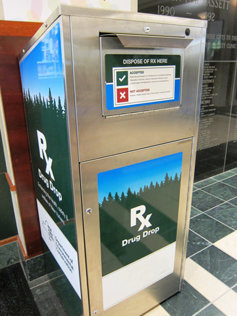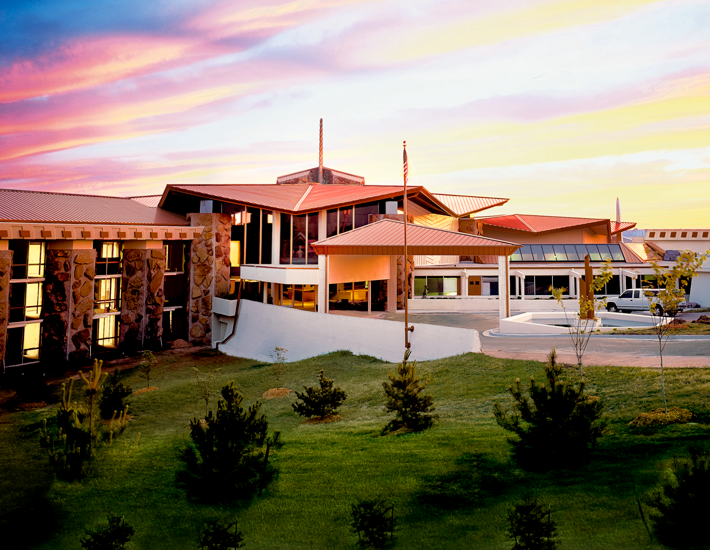A Comprehensive Look at Drug Use in Oklahoma

While every state in the U.S. has recently experienced what can only be called a drug addiction epidemic, each state has felt the growing tide of addiction differently. And though the drug problem is being said by some to have leveled out in certain regions of the country, most would agree that our nation’s drug crisis is still very real and very concerning.
The drug problem is undoubtedly a serious one in Oklahoma. Today’s Oklahoma is not out of its drug crisis. In fact, things are only getting worse there. Just when the state was seeming to get its opiate crisis under control in the mid-2010s, methamphetamine started cropping up, and many opiate addicts switched to meth. Now there are two major drug problems in the Sooner State. The research tells us that much work is needed if we are going to have a sober and drug-free Oklahoma.
The Scope of Drug Use in Oklahoma
Like much of the country, Oklahoma experienced a surge in drug use through the first decade of the 21st-century. And into the present day, much of the state’s drug problems are still worsening.
Take methamphetamine, for example. Over 90 percent of Oklahoma law enforcement rate the methamphetamine threat as “high” or “extremely high.” And there’s a good reason for that concern. In 2018, Oklahoma reported 336 methamphetamine-related fatal overdoses. That’s shocking because about the same number of people die in Oklahoma every year from opiates, a drug that is usually far more fatal than meth. The fact that about as many people are dying from meth in Oklahoma as are dying from opiates is indicative of a considerable meth problem.
The misuse of prescription opiates in Oklahoma also remains a threat, as does the misuse of synthetic opioids like fentanyl. But with prescription opiates, it is the extremely high prescribing of such drugs that has raised warning flags. In 2018, over 4.1 million opioid prescriptions were dispensed in Oklahoma. That equates to a prescribing rate of 105.1 prescriptions for every 100 residents. Oklahoma physicians are writing more prescriptions per year than people living in the state! That has to change.
Heroin is also a growing problem in Oklahoma. Annual heroin seizures are slowly increasing as more heroin is trafficked into the state from drug cartels to the south, and heroin-related deaths have increased seven-fold since 2011. It is no coincidence that heroin trafficking is on the rise, as much of the heroin and meth arrive in Oklahoma along the same trafficking routes.
Oklahoma’s Prevention Programs
Though the drug problem in Oklahoma is currently quite serious, that doesn’t mean the state and local communities aren’t making efforts to prevent the problem from growing. In fact, efforts toward prevention are increasing.
For example, Oklahoma now uses a prescription drug monitoring program. Known as PDMPs, such programs are valuable electronic tools that medical providers and law enforcement use to prevent and detect the diversion and abuse of prescription drugs. PDMPs are state-based electronic databases that pharmacies use to track which prescriptions are being filled for what patients. That way, if one patient is trying to get controlled substances from multiple doctors and pharmacies at once, the PDMP database will alert both prescribers and pharmacists.

Shutterstock.com)
Another program, Safe Trips for Scripts, is a prescription drug take-back program designed to make it easier for Oklahomans to dispose of unused meds. Begun in 2011, the program now manages 181 take-back boxes across the state. These disposal boxes are located in the lobbies of police departments and sheriffs’ offices around the state. This way, Oklahoma residents have a safe, no-questions-asked, ethical, and environmentally-conscious means of disposing of unwanted, unused meds. Since the program began, more than 65 tons of unwanted meds have been collected and disposed of.
In an effort towards prevention, Oklahoma law enforcement is working to crack down on drug trafficking across the state. Because Oklahoma is a large and mostly rural state, the highway system is quite extensive. Law enforcement is working on ways to detect drug traffickers, as traffickers often use secret compartments and technological advances to conceal drug shipments. The efforts seem to be working. In 2018, Oklahoma law enforcement seized 881 pounds of marijuana, 15 pounds of methamphetamine, 20 pounds of cocaine, and 3.4 pounds of heroin.
From the statistics above, we can see that methamphetamine and opiates are severe problems in Oklahoma. The state does experience other drug problems too, like cocaine addiction, marijuana use, other stimulant abuse, etc. But without a doubt, methamphetamine and opiates are the top drug problems in the Sooner State.
Thankfully, Oklahoma is making decisive efforts towards addressing these problems, particularly from an angle of prevention. Oklahoman policymakers believe that if they can prevent Oklahoma’s drug problem from getting any worse, they’ll be able to eventually reduce the problem and have a healthier, happier state.
The only problem is, Oklahoma’s drug problem is never going to cease until those who are actively addicted to drugs in the state can receive treatment for their addictions. Prevention programs are great, but no prevention program can go back in time and prevent a current addict from ever becoming an addict.
The Need to Help Those Who Struggle with Addiction
If you know someone in Oklahoma who is struggling with an addiction, you must get them help as soon as possible. When you love someone who has become trapped by addiction, you can’t wait for them to “get over it” on their own. You have to make the call and find out how you can save their life.
Residential drug treatment centers offer the safest and most effective approach for helping people overcome both the physical and psychological aspects of addiction.
While meth addiction does not create physical dependency as opiates or alcohol do, meth has been said by some to be one of the most addictive drugs in the world. The behavioral, psychological, and personal addiction that meth does create is extremely powerful. Only a residential treatment center will have the tools to help someone who is addicted to meth.
As for opiates, the other growing problem in Oklahoma, an addiction to opiates requires residential care for physical and psychological reasons. Opiate addicts require assistance in the withdrawal process, as well as a great deal of help in learning how to face life without drugs. They need help from trained professionals in actually solving the problems that turned them to drugs in the first place.

Narconon has the tools to help Oklahoma addicts find life anew. Narconon utilizes unique rehabilitation technology like the New Life Detoxification and Life Skills to assist recovering addicts in leaving drugs behind.
The fatal nature of drug addiction could not be more clear. And while Narconon helps thousands of people create new, drug-free lives each year, there are many more who need help. If your loved one is one of those men or women who is still struggling with addiction, don’t let them become another statistic to be recorded in next year’s CDC drug death reports. Please contact Narconon today and take the first step towards ending the vicious cycle of addiction.
Sources:
https://www.drugabuse.gov/opioid-summaries-by-state/oklahoma-opioid-summary
Reviewed and Edited by Claire Pinelli, ICAADC, CCS, LADC, RAS, MCAP


 ®
®